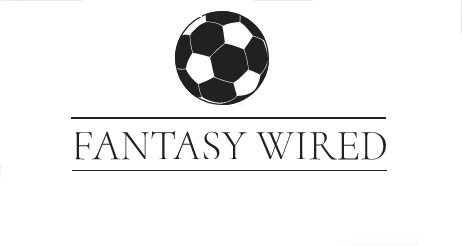
Contrarian is a buzz word that is thrown around a lot in the daily fantasy sports (DFS) community. Many people believe that you need to have low-owned players to win a big DFS tournament. You don’t, but there is some merit to going against the grain in the right situations.
What is Contrarian?
A contrarian lineup is generally one that rejects mainstream plays/ideas. For daily fantasy hockey, this can refer to stacking a team that isn’t popular, using a popular team’s third line and/or taking a goalie that is a big underdog.
The Math Behind Going Contrarian
The theory behind contrarian lineups is simply conditional probability.
Consider this scenario. There is a bag with 10 balls. 9 of the balls are red, 1 of the balls is black. One ball is going to be pulled out. If you correctly guess the color, you win $100.
Obviously you are going to guess red (as you should). You have a 90% chance of winning.
Now let’s consider that same scenario, but with an added twist. There are now 10 people guessing (including you) and the $100 prize will be split between everyone who guess the correct color. Do you still want to guess red?
Maybe. It depends on what other people are doing. If you know every single person is guessing red, you are actually better off guessing black.
Here is why: by guessing black (and being the only person to do so), so you get the full $100 prize all to yourself. Now, black will only be the winning color 10% of the time, but a 10% chance of winning $100 gives you an expected value of $10.
On the other hand, if you guess red (and everyone else does too), the best case scenario is you splitting that $100 with 9 other people. So if red wins, you only win $10. And red only wins 90% of the time, giving you an expected value of $9, which is $1 less than the expected value of betting black.
So to let’s bring this back to daily fantasy hockey. Betting red is like stacking the most popular team of the night. It is more likely to come through, but you are fighting for position with a bunch of other people that did the same thing. So even if you pick a stack that outscores every other stack by a wide margin, you still need the rest of your roster to really come through and separate you from the hundreds of people that also stacked that team. That isn’t easy.
On the other hand, if you choose a contrarian stack (betting on black in the above example) and that stack is the highest scoring one of the night, you will likely be way ahead of almost everyone else. But there is a reason that stack is contrarian: it is probably much less likely to come through.
So you are taking the option that is less likely to occur in exchange for a bigger return if it does occur.
How to Be Contrarian in NHL DFS
The first step in being contrarian is figuring out who the highly owned teams/lines will be. This is actually pretty easy, since the general public does not go very in-depth for NHL research.
Highly owned stacks usually have all or most of the following characteristics: big favorite according to Vegas lines, at home, great recent results, big name players, playing Buffalo.
The other thing you can do is to look around the internet at various DFS articles and discussions for that day. You will generally see the same names popping up. Those guys will usually be higher owned. The bigger the site the recommending them, the bigger the boost in ownership generally.
So now you know who not to play. As I mentioned in the opening, there are a few ways to go about picking who to play. Here are the three ways I generally approach it.
- 3rd line from popular team: This one is a little tough to pull off. You really need the right team and the right matchup to do it. You are looking for teams with strong third lines, guys that could play top six minutes for other teams. Teams like Boston, Minnesota and NY Islanders (when healthy) are good examples. You can find talented players (that see power play time) on the third line. And most people will never consider them because they are on the third line.
- 1st line from a bad team: Even Buffalo won games in 2014. Personally, I couldn’t bring myself to stack Buffalo, but there are some other teams I would consider. Edmonton and Toronto both have some talented forwards. Carolina isn’t as bad as their numbers suggest. These teams lose a lot and they are often underdogs. So the ownership will be very low on them most nights.
- Contrarian Goalie: The other option you have is to focus on goalie. Everyone is always looking for the win with their goalie, so this allows a lot of room for contrarian options. You can take a good goalie in an a tough matchup or one that has a terrible matchup and is a huge underdog. Both are likely to have very low ownership % and they are also likely to see a ton of shots. We know from our experience in stacking against these types of goalies that even the worst goalies can steal games for the team sometimes. If they do, you are looking at a huge night from your goalie because they probably saw a lot more shots (and made a lot more saves) than the popular choices.
Tips for Being Contrarian
- Contrarian doesn’t mean stupid: Stacking Buffalo on the road against the Kings is definitely contrarian, but it is also stupid. The best contrarian stacks are generally teams/lines that are talented but people are overlooking for a variety of factors (better matchups elsewhere, low Vegas total, poor recent results). Sometimes through research, you can uncover a matchup you think is obvious that ends up being contrarian because everyone else just misses it. This actually happens to me a lot because I don’t value a lot of the statistics that the mainstream does.
- 1 Longshot per lineup: Don’t go overboard. Making a bet on a line that has a 10% chance of hitting is one thing. Making a bet on two lines that each have a 10% of hitting gives you a 1% chance of hitting both. The reward doesn’t justify the ridiculous risk you are taking. It is hard enough to hit one longshot, so don’t be afraid to pair your longshot with a safer stack. If you have multiple longshots you want to use, do it in separate lineups. The one exception I have to this rule is the goalie. If you are stack a longshot team, it is fine to use their longshot goalie as well. This is because their success is heavily correlated (especially on a +/- site). This correlation means you are still basically betting one longshot.
- Short Slates Work Best: To win with a contrarian lineup, you need the popular teams to fail. On a full schedule, there will likely be 4-5 popular teams, plus multiple contrarian options. So you need those teams to fail and your contrarian option to be the right choice. On a short slate, it is usually very easy to figure out who the 1-2 popular choices will be and your odds of having two good teams fail is a lot better than five good teams fail.
